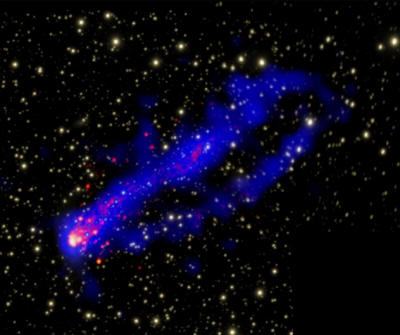|
by Mel Acheson Jan 27, 2011 from Thunderbolts Website
Galaxy ESO 130-001.
Credit: X-ray NASA/CXC/UVa/M. Sun, et al;
Plasma-wise astronomers immediately recognize that
Birkeland currents tend to come in pairs. Actually, they come in
pairs of pairs, braided pairs, and cables of braids - hence
explaining the filamentary universe. (Perhaps one could call it the
“fibrous universe.”)
They also pull in matter from the surrounding region and
sort it into layers of similar composition according to ionization
potential. This process, observable in laboratory discharges and
involving forces many, many times stronger than gravity, is more
likely to be the cause of star formation than the gravitational
collapse of gas clouds. Gravitational collapse has never been
demonstrated, nor has it overcome the theoretical difficulties -
seldom discussed - that seem to render it impossible.
Being nearby, as distinguished from the conventional redshift-distance (below video) placement, they are small.
They appear to be the next step in growth of BL Lac objects, quasars with multiple or “fractured” centers, which are the first products of ejection from the nuclei of the active galaxies.
(The “grown-up”
results are companion galaxies, which have
evolved step-wise down
the
Karlsson redshift periodicity from high-redshift quasars.)
The dominant galaxy in a cluster would be the anode within a sheath that surrounds the entire cluster, similar to the heliosphere around the solar system. The smaller galaxies would be secondary cathodic elements within that sheath, similar to comets.
The double tail on this galaxy marks it
as a galaxy-sized comet.
|

